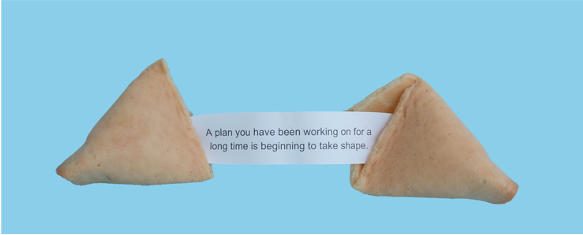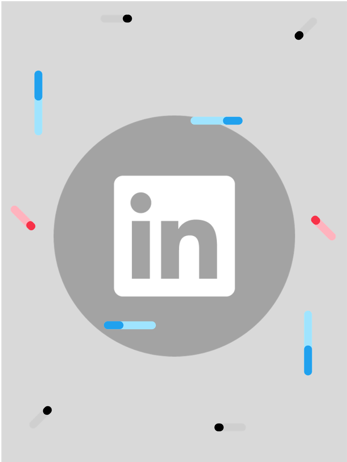October 2020
3 Top Tips for Planning (when the world’s a mess)
- Marketing Efficiency,
- Marketing Strategy,
- Marketing Effectiveness
AUTHOR

Russ Powell
Founder / MD
If this year has taught us anything it’s to expect the unexpected. Whilst that may be a fair view to take in a general sense, your MD or CEO is probably going to need a little more meat on the bone of a marketing strategy that’s going to drive your business forward, right?
Just buffeting about on the winds of change and dealing with things reactively doesn’t scream “well thought through” does it? If you fail to plan, plan to fail after all.

So, in these topsy turvey times when curve balls can start flying at the drop of a hat just how can you tackle your marketing planning and ensure you’re steering the good ship marketing properly?
With a trio of top tips for planning and strategy from your favourite marketing agency, of course. That’s us by the way.
The following should give you some brain food and help you re-think, un-think and then come at things from a slightly different angle. Because when the world’s a mess, different angles will be very useful things to have…
Always on > Quarterly Activity
There seems to be an odd prevailing wisdom, especially in B2B land that marketing campaigns only ever run for a calendar quarter and that’s it. No more, no less, just one quarter.
Sure, it’s an easy way to compartmentalise things, break up the year, and add some nice colourful blocks to a planning gantt chart. But do we really think that’s how buyers – you know, the people who we want to get in front of to pull in revenue – think about things?
“Ah, yeah. I’d love to buy your solution/service/widget but we were only buying that in this quarter over here, sorry.”
It just doesn’t make sense, does it? It’s not how people actually buy. And it makes even less sense for us as marketers when things are so much more unpredictable.
Producing “big bang” campaigns take up enormous amounts of effort, budget and time. They generally only focus on a single message or proposition, run for a limited amount of time, and then only capture a tiny sliver of the interested market (if they do anything at all).
Is that the kind of approach you think you can back right now? Probably not. But the good news is there’s another way.

An “always on” approach to campaigning uses a number of persistent campaigns spread across the sales funnel that present all the different types of value you add for different audiences. People can be fed into campaigns regularly using intent data and/or automations or they self-select to join them when the time’s right.
However campaigns run they’ll help you engage people more consistently and demonstrate more value to them over time, rather than just shouting “LOOK AT US” for a brief moment with a stand-alone campaign.
Of course, you can iterate these campaigns and their messages on a quarterly (or however often you want) basis but the key is that they remain running indefinitely. You step away from the end-to-end, “turn one campaign off, turn another one on” approach and instead move towards one that’s flexible and focuses more on long-term ROI (rather than short-term vanity metrics).
Which makes sense to us right now.
Focus on “The Now”
A quick aside – We do appreciate that it can sound like we’re contradicting ourselves already. But we aren’t. (We promise). What we were talking about in the last point is about setting up the mechanisms for campaigns so they run in an “always on” fashion that’s far more flexible than a quarter-by-quarter approach. Yes, these campaigns will run for the long-term but how you iterate the activity that sits around these will allow you to focus on “The Now”. Hope that makes sense…
Even if the world were a bit more predictable and stable, planning for a whole year marketing-wise has always felt like a bit much to us. We don’t know what we’re having for dinner tomorrow night let alone what sort of sales activation activity is going to do the trick in 11 month’s-time.
And with things how they are right now looking further than 3 months away is probably a bit of a stretch, don’t you think?
So, if you’re not planning too far ahead and you can’t change what’s already happened (unless you’ve invented a time machine recently? Get in touch with us a week next Tuesday if that’s the case) you get to be far more present and focus on “The Now”. Which is actually quite freeing.

“The Now” is often something marketers forget about. You know, “The Now”. Getting stuff done and executed rather than just talking about getting it done and executed.
So, rather than sitting there twiddling your thumbs worrying about what’s to come and what you can’t control, build and launch some activity that you think will work, quickly. If it does work, awesome. Figure out why and then do more of it. If it doesn’t work, that’s ok. figure out why and then try something else.
You’ll quickly find yourself testing and exploring different and more innovative ways of doing things that deliver a real impact. Potentially ways of doing things your competitors haven’t thought of or won’t ever get to because they’re too busy worrying about things they can’t control (or just twiddling their thumbs).
We know who’s shoes we’d rather be in.
Make sure your strategy is a strategy
It may sound like a redundant thing to say but it needs to be said because a lot of what gets passed off as “strategy” nowadays just isn’t.
A strategy assesses where you are right now, identifies where you want to get to and then sets out the actions that need to be taken to get you from the former to the later. “To be the leading whatever” or “To deliver revolutionary solutions” (or pretty much every other load of waffle that gets called strategic in B2B circles) may be lofty aspirations, but strategy they ain’t.

Strategy is what sits underneath these things to make them a reality and is tied to action.
Want to know if what you’re doing is strategic or just another square on the “bullshit bingo” scorecard? Run it through the SMART machine.
I’m sure you’re all well aware of SMART but if you need a refresher it stands for:
- Specific. Is what you’re saying a general statement of intent or is it focused on a particular area?
- Measurable. Are you able to quantify what you’re intending to do? We’re not really sure how you put a number to being the leading whatever or how you measure whether a solution is revolutionary or not.
- Achievable. Is what you want to do possible given the current size/scope of your business and where you currently play? Are you going to be the “number 1 supplier of widgets” if you don’t even make widgets right now?
- Realistic. Is what you want to do even feasible?
- Time Constrained. What timeframe are you working in? By the end of tomorrow? By December 2035? How long are you giving yourself?
If what is considered “strategy” right now doesn’t pass muster with the SMART machine, take it away and give it a good kicking until it does. You’ll then be on a much stronger footing to build your marketing activity and plans so you deliver what your business needs.
For some further reading on strategy and how to get it right we can wholeheartedly recommend “No bullsh*t Leadership” by Chris Hurst and “Good Strategy/Bad Strategy: The difference and why it matters” by Richard Rumelt. Read them now, thank us later.


